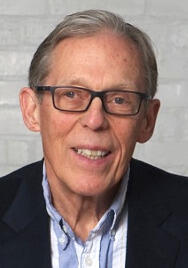
Feb. 8, 2019
Reliance on tech, daily strain are causing ‘professional loneliness’ in health care
Share this story
By Patrick Kane and Ahniaelyah Spraggs
Rushed clinical visits and an increased reliance on technology in medicine that replaces in-person communication between doctor and patient have led to “a kind of professional loneliness” and “a crisis in job satisfaction” among physicians, writes Richard Wenzel, M.D., in the current issue of The New England Journal of Medicine. Wenzel’s essay, “RVU Medicine, Technology, and Physician Loneliness” describes competing factors that contribute to the sense of loneliness many health care professionals feel.
Working in a demanding field is one factor that has left little time for physicians to reflect and have time to themselves. In an interview with VCU News, Wenzel, a professor in the Department of Internal Medicine at the Virginia Commonwealth University School of Medicine, discussed how to adapt to busy schedules without experiencing compassion fatigue or strain from exposure to working with those suffering from the consequences of traumatic events.

In the essay, you write that face-to-face discussions are being replaced by digital records since “we can see the information we need right on our own computer screen.” What is lost, for the physician and patient, in this shift?
Direct conversation has a tone, not just words, and tone conveys a patient’s concerns, worries and fears. In addition, a good physician is a good observer and can interpret body language, eye contact, what is said and, importantly, what is not said — avoided. Face-to-face communication allows an immediate space for a patient to express how they feel with new information or new concerns. At that time, a physician can confidentially respond with the expectations and current plan.
With respect to colleagues, again, face-to-face communication has advantages.
Our colleagues always know more than what they dictate in a report. Whether the colleague is in a lab, the radiology suite or a consulting sub specialist, direct discussion can lead to thoughts about some areas of concern with the current information or test, concerns that may be unusual but something to consider if the initial diagnosis or testing results change. They have a perspective that cannot be gleaned from a standard lab report.
All of this might be lost without conversation.
You recommend “uninterrupted time to reflect, to converse, and to grapple with the downsides of the unrestrained embrace of technology” as a means to rebuild creativity, innovation and problem solving. How do you fit this into the already crowded day?
Uninterrupted time has to be scheduled, just as people schedule their exercise, yoga lesson, travel time to work, meeting times for children at school, date night with the spouse, and patient encounters. It cannot be the last entry in a crowded day, activated only if time permits. That time rarely does open up.
You touch on the stress of rising student debt and increasing cost of living. What would you advise a medical student or resident to be mindful of as they enter this career?
I’m not sure I need to give advice to new medical students. They are intelligent young people who know that medical school is an expensive venture. That said, some schools have scholarships, and [New York University] is tuition-free. As an aside, I have thought that the deans of all graduate schools should initiate 25-year plans to be tuition-free for all students by that time. Most deans have a four- to five-year planning window. That correlates with their average tenure or tenure review.
I sometimes say, not in pure jest, that a medical student has to be aware of the financial incremental cost of falling in love with a classmate. The average debt then climbs from $200,000 to $400,000.
In your opinion, what does having a meaningful relationship with patients look like?
A meaningful relationship of a patient and physician is characterized by trust, comfort, open communication and accessibility. Many physicians share their cellphone number with patients, who very much appreciate and respect physicians’ time. The relationship means that the physician knows the patient’s personal and professional goals, dreams, aspirations, avocations, what they rejoice about in the bright part of the day, and occasionally fear in the dark of night when left to their own thoughts.
What ways do you suggest physicians connect with patients without experiencing compassion fatigue?
One of the best ways a physician can avoid compassion fatigue is, again, conversation — with other colleagues. Talking to colleagues about a difficult case or a highly charged emotional response in a patient — most of whom have had similar experiences — is empowering. This leaves a physician with renewed strength to move ahead with the energized engagement, compassion and commitment.
Subscribe to VCU News
Subscribe to VCU News at newsletter.vcu.edu and receive a selection of stories, videos, photos, news clips and event listings in your inbox.












